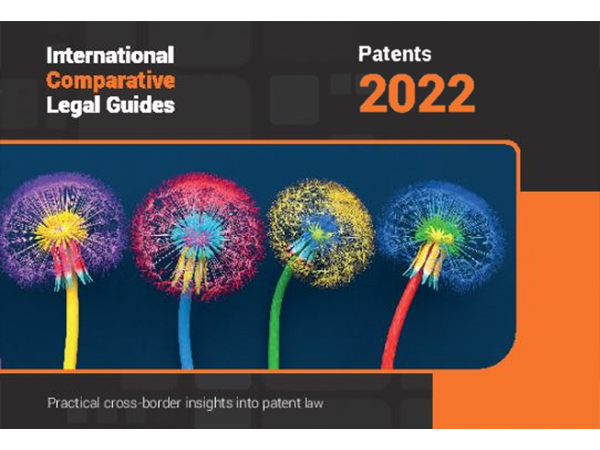
Intellectual Property
Viewpoints
Filter by:
Federal Circuit Affirms that the ITC Cannot Investigate an FDCA Violation without the FDA’s say-so
May 30, 2019 | Blog
In Amarin Pharma, Inc. v. Int’l Trade Comm’n (18-1247), the Federal Circuit affirmed the International Trade Commission’s (“ITC”) finding that Amarin’s false advertising claim under § 43(a) of the Lanham Act was precluded by the Federal Food, Drug, and Cosmetic Act (“FDCA”) because these claims require the FDA’s guidance on whether possible non-compliance of the provision is a violation of the FDCA. The court also found that the Commission may decline to institute an investigation where there is no cognizable claim under § 337.
Read more
Claim Construction of “Customary and Ordinary” Meaning Does Not Justify Amendment of Noninfringement and Invalidity Contentions
May 29, 2019 | Blog | By Andrew DeVoogd, Courtney Herndon
Recently, in a patent infringement action pending in the Eastern District of Michigan, Webasto Thermo & Comfort N. Am., Inc. v. BesTop, Inc., No. 2:16-cv-13456, Order No. 209 (E.D. Mich. May 20, 2019) (Borman, J.), the court overruled defendant BesTop’s objections to the Special Master’s recommendation to grant plaintiff, Webasto’s, motion to strike BesTop’s second amended noninfringement and invalidity contentions.
Read more
Another Shoe Drops in the Qualcomm Patent Licensing Saga
May 24, 2019 | Blog | By Michael Renaud, Bruce Sokler, Rich Gervase
Just when observers thought Qualcomm could celebrate its successful litigation with Apple another decision has come down which could have major implications for Qualcomm’s business going forward.
Read more
Performing a Service without Selling the Process Still Triggers the On-Sale Bar
May 24, 2019 | Blog | By Daniel Weinger, Will Perkins, Serge Subach
Services play a large role in today’s economy, and it is important to be mindful of how certain pitfalls that apply to product-based intellectual property rights also apply to method or process-based intellectual property (“IP”) rights. For example, the “on-sale bar” invalidates a patent on a product where a sale or offer to sell the product occurred more than a year prior to filing for a patent.
Read more
ITC ALJ McNamara in Apple-Qualcomm Investigation: Exclusion Orders Are Incentives to Design- Around
May 21, 2019 | Blog | By Michael Renaud, James Wodarski
In her April 16, 2019 Public Interest Findings, Administrative Law Judge (“ALJ”) McNamara decisively stated that antitrust issues disguised as competitive conditions arguments are not a factor in the International Trade Commission (“ITC”) proceeding between Apple and Qualcomm. See Mobile Electronic Devices II, Inv. No. 337-TA-1093, Analysis and Findings with Respect to the Public Interest, and Recommendation on Remedy and Bond, at 4 (April 16, 2019).
Read more
Director Iancu Roundtable with BIOCOM San Diego
May 20, 2019 | Blog | By Marc Morley, Melissa Brayman
Andrei Iancu, the Under Secretary of Commerce for Intellectual Property and Director of the USPTO, believes that the U.S. needs a strong patent system in order to excel and thrive in the global economy. He has made strengthening the U.S. patent system a core part of his mission responsibilities. Director Iancu has been travelling across the country and speaking with various patent stakeholders. As part of this effort, he met with BIOCOM’s Board of Directors and Intellectual Property Committee in San Diego on April 18, 2019.
Read more
Under New Guidance: Patent Eligibility of Computerized Diagnostics at the PTAB
May 15, 2019 | Blog | By Ken Jenkins
We previously reported here on a Patent Trial and Appeal Board (PTAB) decision involving a case in which a patent eligibility rejection was overcome by replacing a “comparing” step with a recitation that the sample is from a particular patient population. However, because the eligibility rejection was dropped by the examiner before appeal, the PTAB did not revisit the issue.
Read more
District Court of Delaware awards an ongoing royalty that applies not just to adjudicated products but also to non-adjudicated products that are “not colorably different.”
May 13, 2019 | Blog | By Michael Renaud, Sandra Badin
Recently, in Godo Kaisha IP Bridge 1 v. TCL Commc’n Tech. Holdings Ltd., the Delaware District Court awarded the prevailing plaintiff in a patent infringement suit an ongoing royalty that covers not only the products adjudicated to infringe but also non-adjudicated products that were “not colorably different” from the adjudicated products. The court noted that the patent claims asserted by the plaintiff, IP Bridge, were found to be essential to the LTE standard because LTE phones do not operate on the LTE network without infringing the asserted claims.
Read more
Where Both Parties Behave Badly in Litigation, Attorneys’ Fees Are Unlikely to Be Awarded
May 7, 2019 | Blog | By Andrew DeVoogd
On April 25, 2019, in Int’l Designs Corp., LLC, et. al. v. Hair Art Int’l, Inc., Judge George H. Wu in the Central District of California denied Hair Art’s motion for attorneys’ fees under 35 U.S.C. § 285. Judge Wu concluded that, based on an analysis of the totality of the circumstances, “[t]his case was certainly ‘exceptional,’ but it was exceptional in that both parties made litigation choices leading to a significant waste of party and judicial resources.” (Emphasis added.)
Read more
Dueling Declaratory Judgment Suits Result in a Dismissal and Boomerang Transfer Back to the First-filed Forum Under TC Heartland
April 24, 2019 | Blog | By Adam Samansky, Peter Cuomo, Joe Rutkowski
On April 17, 2019, Judge Gilstrap of the United States District Court for the Eastern District of Texas, in Apicore v. Beloteca, No. 19-cv-00077, held that while the court could exercise personal jurisdiction over a generic drug manufacturer in connection with the patentee’s action seeking a declaratory judgment of noninfringement, venue was not appropriate in the Eastern District of Texas under the applicable patent venue statute, 28 U.S.C. § 1400(b).
Read more
Understanding Antedating of a Prior Art Reference for a Patent
April 17, 2019 | Blog | By Christina Sperry
The Federal Circuit’s decision in ATI Technologies ULC v. Iancu (April 11, 2019) highlights the proper standard to use in evaluating whether a claimed invention was reduced to practice before the effective date of a prior art reference.
Read more
Collateral Estoppel Bars Assertion of Patent Claims That Do Not “Materially Alter the Question of Invalidity” Relative to Claims Invalidated in IPR Proceedings
April 10, 2019 | Blog | By Peter Snell
On April 4, 2019, Chief Judge Patti Saris of the United States District Court for the District of Massachusetts held in Intellectual Ventures I, LLC v. Lenovo Group Ltd. that a final determination of invalidity in inter partes review proceedings (“IPR”) collaterally estops the patent owner from asserting in district court another claim of the same patent that does not “materially alter the question of invalidity.” The court granted the defendant’s motion for summary judgment of invalidity as to that claim.
Read more
Patent Claim Preamble Lessons from Arctic Cat Inc. v. GEP Power Products
April 9, 2019 | Blog | By Christina Sperry
The general rule is that a patent claim’s preamble does not limit the claim unless the preamble gives life, meaning, and vitality to the claim. The Federal Circuit’s recent decision in Arctic Cat Inc. v. GEP Power Products, Inc. (March 26, 2019) considers the situation where a patentee wants a preamble to be a required claim limitation, unlike the more typical situation where a patentee does not want a claim preamble to be limiting, such as in Pacing Technologies v. Garmin International previously discussed HERE. The court deciding in Arctic Cat that the preambles at issue were not required claim limitations highlights important considerations for patent application drafting and for crafting post-issuance arguments.
Read more
When Is Pre-Acquisition Analysis of Patents Protected from Discovery During Litigation?
March 29, 2019 | Blog | By Andrew DeVoogd, Daniel Weinger
A Discovery Master in Limestone Memory Systems LLC v. Micron Tech., Inc. pending in the Central District of California recently provided additional guidance to practitioners and patent owners on this important question. The report, issued on February 19, 2019, sustained in part the plaintiff Limestone’s privilege and work product assertions related to pre-acquisition analysis of the asserted patents conducted by Acacia, Limestone’s parent company. In doing so, the report emphasized that courts have long held that attorney-client privilege may arise when a company obtains legal advice, while seeking to acquire patents, protecting from discovery communications between the acquiring company and inventors.
Read more
Expert’s Lump-sum Damage Calculation is Not Inadmissible Because it Accounts for Future Sales of Potentially Non-accused Products
March 28, 2019 | Blog | By Andrew DeVoogd, Daniel Weinger
A recent order from the District of Delaware in Evolved Wireless, LLC v. Apple Inc., No. 15-00542 (“Evolved Wireless”) provides interesting guidance regarding the use of future sales in calculating lump-sum damages.
Read more
Commission Reverses Apple Infringement Finding, Thereby Mooting the Public Interest Inquiry...For Now
March 27, 2019 | Blog | By Michael Renaud, James Wodarski, Sandra Badin
Yesterday afternoon, the International Trade Commission issued its Final Determination in Certain Mobile Electronic Devices and Radio Frequency and Process Components Thereof, 337-TA-1065. The 1065 Investigation is one of several actions Qualcomm has brought against Apple both here and abroad.
Read more
FRAND Licensing of Global Portfolios – Who Gets to Set Worldwide Rates?
March 26, 2019 | Blog | By Michael Renaud, James Wodarski, Sandra Badin
A key issue in the licensing of standard essential patents (SEPs) is whether national courts have jurisdiction to determine what constitutes a global fair, reasonable, and non-discriminatory (FRAND) license rate. The Court of Appeal in England recently held that its patent courts have such jurisdiction. In Huawei Technologies Co. Ltd. v Conversant Wireless Licensing SARL, the Court of Appeal affirmed the jurisdiction of the High Court of Justice to try a claim for the infringement of UK-designated European SEPs against Chinese as well as English defendants and to issue an injunction for the unauthorized use of the SEPs at issue. In the process, it also affirmed the High Court’s jurisdiction to determine a worldwide FRAND rate.
Read more
PanOptis’ Recent Victory against Huawei Demonstrates Why an International Enforcement Approach Is Advisable for Standard-Essential Patents
March 21, 2019 | Blog | By Michael Renaud, James Wodarski, Matthew Galica
PanOptis Patent Management, LLC (“PanOptis”) was recently awarded enhanced damages and ongoing royalties as a result of Huawei Technology Co. Ltd. (“Huawei”) infringing five of its patents, four of which were alleged to be essential to the 4G LTE technology standard. Despite the successful legal outcome, the size of PanOptis’ cumulative damages award for its standard-essential patents was less than some observers anticipated. This result emphasizes the importance of taking a global enforcement approach—leveraging international fora—to recoup meaningful compensation for standard-essential patents.
Read more
Precedential PTAB Panel Says Petitioners Can Join Their Own Earlier-Filed IPRs and Join New Issues in Limited Circumstance
March 19, 2019 | Blog | By William Meunier , Brad M Scheller
In its first decision since its inception, the Precedential Opinion Panel (“POP”) for the U.S. Patent Trial and Appeal Board (“Board”), in Proppant Express Investments, LLC v. Oren Technologies, LLC, IPR2018-00914, held that under 35 U.S.C. § 315(c) the Board has discretion to allow a party, in limited circumstances, to join its own earlier-filed inter partes review (“IPR”) and join new issues, even if the party was otherwise time-barred under 35 U.S.C. § 315(b). Specifically, the Board may use this discretion only where fairness requires it and to avoid undue prejudice to a party. The POP nevertheless denied Proppant Express Investments LLC’s (“Petitioner”) motion for joinder as Petitioner’s motion was “a result of Petitioner’s errors,” and therefore did not fall within the limited circumstances it envisioned.
Read more
Cert. Denied – Patent Owners Still Must Prove Unpatented Features Did Not Drive Consumer Purchasing to Rely on EMVR
March 18, 2019 | Blog
On February 25, 2019, the Supreme Court denied Power Integrations, Inc.’s (“Power Integrations”) petition for writ of certiorari. The question presented to the Court was whether a plaintiff who had proven customer demand for an infringing product as a result of the patented feature was entitled to damages based on the entire market value of the product, or if the plaintiff also had to prove that the other unpatented features of the infringing product did not drive customer demand. The Court’s denial leaves a high burden for patentee’s relying on the Entire Market Value Rule (“EMVR”).
Read more
Explore Other Viewpoints:
- Data Centers & Digital Infrastructure
- AI: The Washington Report
- Antitrust
- Appellate
- Arbitration, Mediation & Alternate Dispute Resolution
- Artificial Intelligence
- Awards
- Bankruptcy & Restructuring
- California Land Use
- Cannabis
- Class Action
- Complex Commercial Litigation
- Construction
- Consumer Product Safety
- Corporate Governance (ESG)
- Cross-Border Asset Recovery
- DEI Legal Developments
- Debt Financing
- Direct Investing (M&A)
- Diversity
- EB-5 Financing
- Education & Nonprofits
- Employment
- EnforceMintz
- Environmental (ESG)
- Environmental Enforcement Defense
- Environmental Law
- Environmental, Social, and Corporate Governance (ESG)
- FDA Regulatory
- False Claims Act
- Federal Circuit Appeals
- Financial Institution Litigation
- Government Law
- Growth Equity
- Health Care
- Health Care Compliance, Fraud and Abuse, & Regulatory Counseling
- Health Care Enforcement & Investigations
- Health Care Transactions
- Health Information Privacy & Security
- IP Due Diligence
- IPRs & Other Post Grant Proceedings
- Immigration
- Impacts of a New US Administration
- Insolvency & Creditor Rights Litigation
- Institutional Investor Class Action Recovery
- Insurance & Financial Services
- Insurance Consulting & Risk Management
- Insurance and Reinsurance Problem-Solving & Dispute Resolution
- Intellectual Property
- Investment Funds
- Israel
- Licensing & Technology Transactions
- Life Sciences
- Litigation & Investigations
- M&A Litigation
- ML Strategies
- Medicare, Medicaid and Commercial Coverage & Reimbursement
- Mergers & Acquisitions
- Patent Litigation
- Patent Prosecution & Strategic Counseling
- Pharmacy Benefits and PBM Contracting
- Portfolio Companies
- Privacy & Cybersecurity
- Private Client
- Private Equity
- Pro Bono
- Probate & Fiduciary Litigation
- Products Liability & Complex Tort
- Projects & Infrastructure
- Public Finance
- Real Estate Litigation
- Real Estate Transactions
- Real Estate, Construction & Infrastructure
- Retail & Consumer Products
- Securities & Capital Markets
- Securities Litigation
- Social (ESG)
- Special Purpose Acquisition Company (SPACs)
- Sports & Entertainment
- State Attorneys General
- Strategic IP Monetization & Licensing
- Sustainable Energy & Infrastructure
- Tax
- Technology
- Technology, Communications & Media
- Technology, Communications & Media Litigation
- Trade Secrets
- Trademark & Copyright
- Trademark Litigation
- Unified Patent Court (UPC)
- Value-Based Care
- Venture Capital & Emerging Companies
- White Collar Defense & Government Investigations
- Women's Health and Technology





